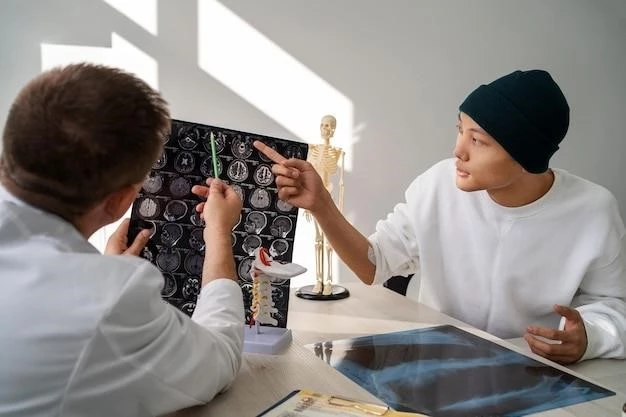Understanding Bulbospinal Amyotrophy
Causes of Bulbospinal Amyotrophy
Bulbospinal amyotrophy is caused by a genetic mutation affecting the androgen receptor gene. This mutation leads to degeneration of motor neurons in the brainstem and spinal cord, resulting in muscle weakness and atrophy. It is important to understand the genetic basis of this condition to explore appropriate treatment avenues and provide support to affected individuals and their families. Consulting with a genetic counselor or a healthcare professional specialized in genetic disorders can help you navigate the complexities associated with the genetic factors contributing to bulbospinal amyotrophy.
Symptoms of X-linked Bulbospinal Amyotrophy
X-linked bulbospinal amyotrophy presents with symptoms such as muscle weakness, fasciculations, difficulty swallowing, and speech problems. Patients may also experience tremors, muscle cramps, and respiratory issues. It is crucial to monitor these symptoms closely and seek medical advice to manage the condition effectively. Collaborating with a multidisciplinary team of healthcare providers, including neurologists and speech therapists, can optimize the treatment approach and enhance the quality of life for individuals living with X-linked bulbospinal amyotrophy. Early detection and intervention play a key role in addressing the diverse symptoms associated with this condition.
Treatment Options for Bulbospinal Amyotrophy
Treatment for bulbospinal amyotrophy focuses on managing symptoms and improving quality of life. Physical therapy and assistive devices can help maintain muscle strength and function. Speech therapy may address swallowing and speech difficulties. Medications can alleviate pain and manage symptoms like muscle cramps. Genetic counseling is crucial for understanding the condition’s progression and potential therapies. Collaborating with a healthcare team specialized in neuromuscular disorders can tailor a comprehensive treatment plan to address individual needs. Stay informed about research advancements and clinical trials for potential innovative treatment options.
Genetic Factors in X-linked Bulbospinal Amyotrophy
X-linked bulbospinal amyotrophy is primarily caused by mutations in the androgen receptor gene. These genetic alterations affect the function of motor neurons in the brainstem and spinal cord, leading to muscle atrophy and weakness. Understanding the genetic underpinnings of this condition is essential for personalized treatment strategies and genetic counseling. Genetic testing can help identify specific mutations and guide clinical management. Engage with genetics specialists and healthcare providers knowledgeable in neurogenetics to navigate the complex genetic factors involved in X-linked bulbospinal amyotrophy. Keeping up-to-date with genetic research can provide valuable insights into potential targeted therapies and management approaches.
Prognosis for Bulbospinal Amyotrophy Patients
The prognosis for bulbospinal amyotrophy patients varies based on disease progression and individual factors. While there is no cure for this condition, early diagnosis and comprehensive care can help manage symptoms and improve quality of life. Prognosis can be influenced by the severity of muscle weakness, respiratory involvement, and the rate of disease advancement. Regular monitoring by healthcare professionals, adherence to treatment plans, and support from caregivers are crucial for enhancing patient outcomes. It is important to stay informed about research developments and clinical trials to explore potential therapeutic advancements that may impact the prognosis of individuals with bulbospinal amyotrophy.

Additional Information⁚
Early Signs of Bulbospinal Amyotrophy
Recognizing the early signs of bulbospinal amyotrophy can facilitate timely intervention. Watch for initial symptoms such as muscle weakness, cramps, twitching, and difficulty with speech or swallowing. If you notice these signs, seek evaluation by a healthcare professional specializing in neuromuscular disorders. Early diagnosis and management are key to enhancing the treatment outcome and quality of life for individuals affected by bulbospinal amyotrophy. Stay proactive in monitoring any subtle changes in muscle function or speech patterns, and communicate promptly with your healthcare team to address any concerns.
Research Advances in X-linked Bulbospinal Amyotrophy
Ongoing research in X-linked bulbospinal amyotrophy is exploring novel therapeutic approaches, genetic modifiers, and targeted treatments to address the underlying mechanisms of the condition. Clinical trials and studies are investigating potential gene therapies, neuroprotective strategies, and symptom management protocols. Stay informed about research advancements through reputable sources and consider participation in clinical trials to contribute to scientific progress and potentially access cutting-edge treatments. Collaborate with healthcare providers knowledgeable about the latest research findings to explore promising options and optimize care for individuals affected by X-linked bulbospinal amyotrophy.
Support and Resources for Bulbospinal Amyotrophy Families
Families impacted by bulbospinal amyotrophy can benefit from a network of support and resources. Seek out patient associations, support groups, and online forums to connect with others facing similar challenges. Utilize counseling services for emotional support and coping strategies. Engage with healthcare professionals specializing in neuromuscular disorders to access comprehensive care and guidance. Explore adaptive technologies, home modifications, and assistive devices to enhance daily living. Educate yourself about available community resources, respite care options, and financial assistance programs. Building a strong support system and accessing tailored resources can empower families to navigate the complexities of bulbospinal amyotrophy effectively.
